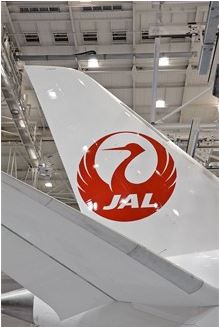
JAL posted operating revenue of 1,289 billion yen (-3.6%), operating income of 170.3 billion yen (-18.6%), ordinary income of 165 billion yen (-21.1%) and net profit attributable to owners of the parent of 164.1 billion yen (-5.9%) on a consolidated basis for FY2016 ending March 31 2017.
The negative results were affected by reduction of fuel surcharges and stronger yen for the international passenger business and price competition with rivals for the domestic passenger business.
For the international passenger business, ASK was up 0.1%, and revenue was down 7.5% to 415.2 billion yen. JAL explained that it practically increased revenue when 0.8% decrease in passengers was considered. JAL increased flights on the Narita-Honolulu, Kansai-Honolulu, and Narita-Bangkok routes during specific periods. For alliances, JAL started code-sharing on the Narita- Madrid route operated by Iberia, expanded code-sharing of all flights between Japan and Taiwan operated by China Airlines, and started code-sharing on routes between Moscow and Novosibirsk, Tyumen, Kaliningrad, and Omsk, operated by S7.
For the domestic passenger business, ASK was down 1.2%, and revenue was down 0.5% to 498.6 billion yen. JAL introduced the Embraer 190 on domestic routes, the first regional jet configured with Class J. JAL expanded services operated with this aircraft on the Itami-Sendai, Itami-Fukuoka, and Itami-Nagasaki routes in addition to the Itami-Kagoshima route in an effort to provide greater comfort when flying to and from Itami.
For FY2017 ending March 31 2018, JAL has forecasted operating revenue of 1,339 billion yen, operating income of 142 billion yen, ordinary income of 137 billion yen and net profit of 100 billion yen.




